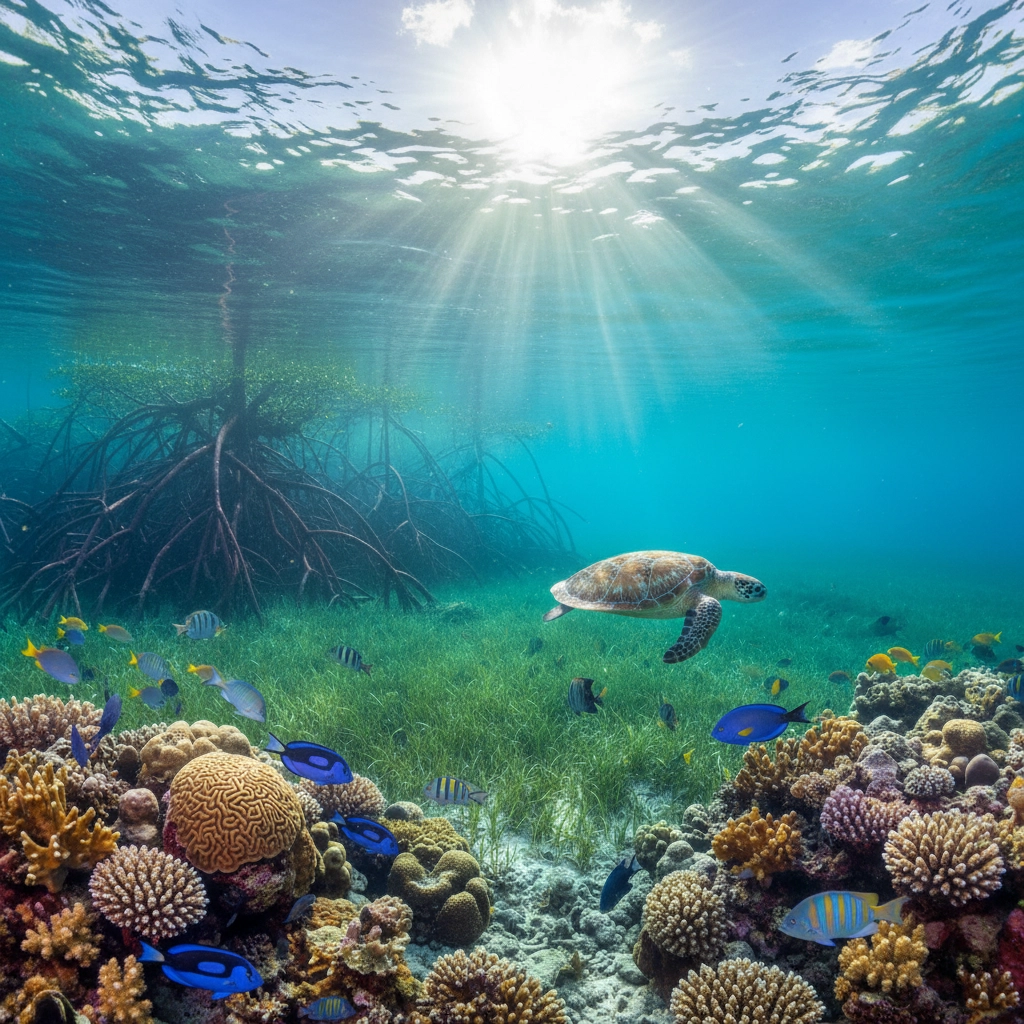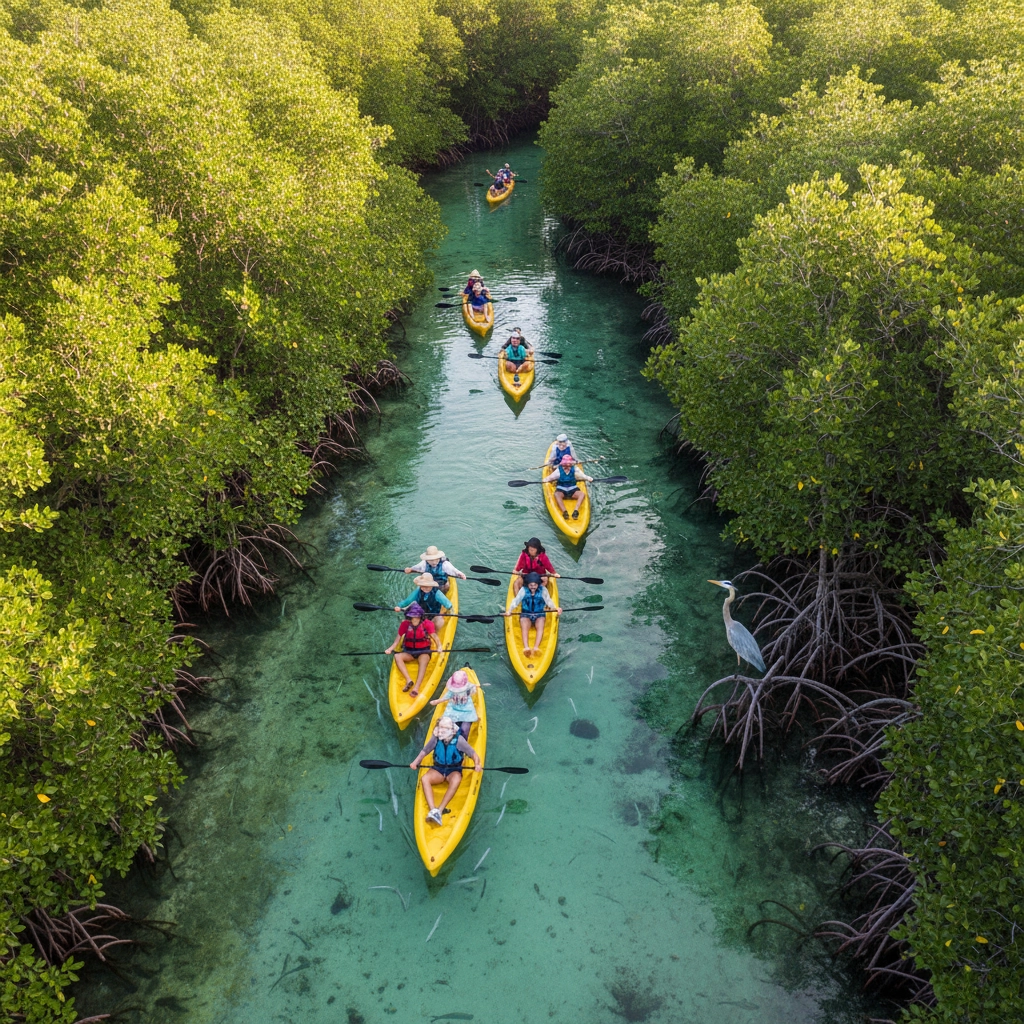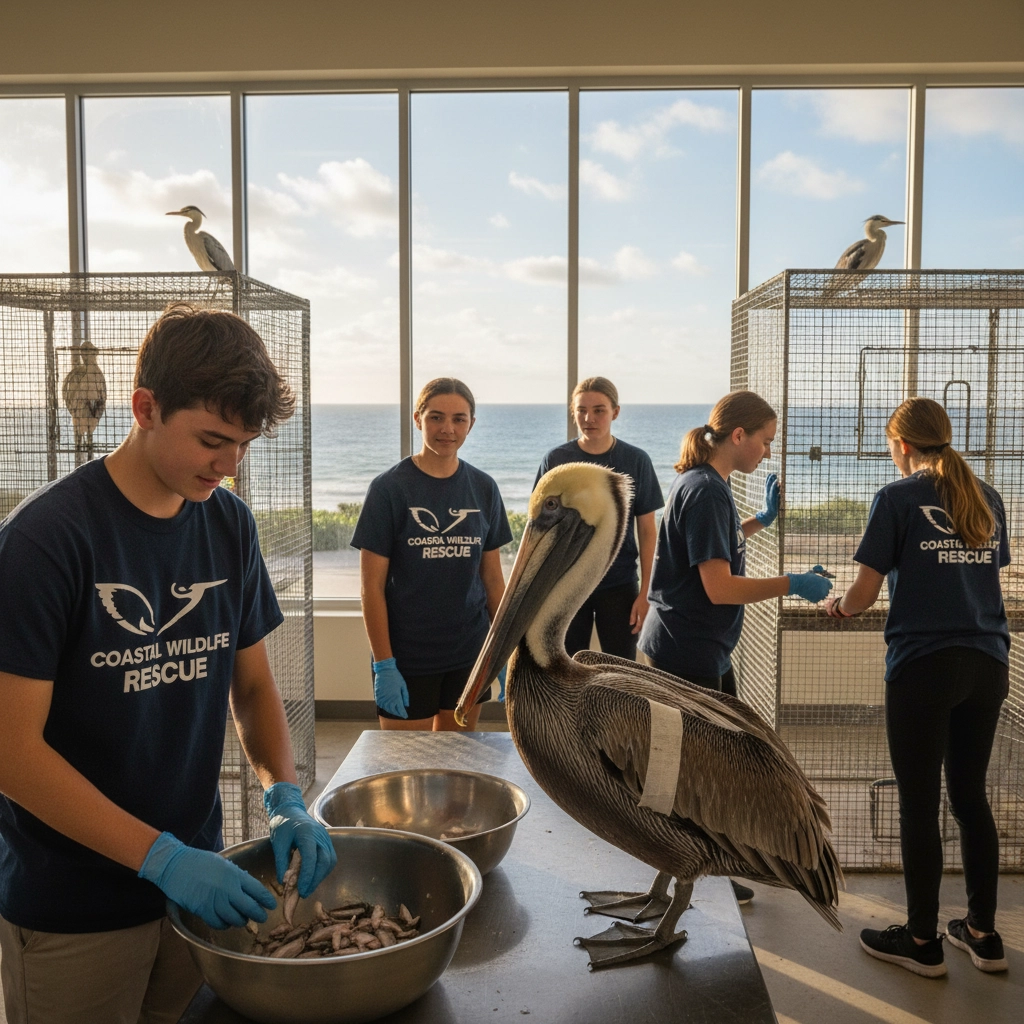Florida Keys: The Ultimate Living Laboratory for Student Science Trips
- Caleb Mullenix
- Oct 27
- 5 min read
Discovering the Florida Keys through educational travel transforms abstract scientific concepts into tangible, unforgettable learning experiences. This unique island chain represents one of North America's most diverse and accessible marine laboratories, where students engage directly with interconnected ecosystems spanning coral reefs, seagrass meadows, and mangrove forests. Preparing your students for a Florida Keys science expedition involves understanding how these environments create unparalleled opportunities for hands-on marine biology, conservation work, and community service learning.
Understanding the Interconnected Ecosystem Web
The Florida Keys function as a living classroom where students observe and study the critical connections between three primary marine habitats. Begin by teaching students how coral reefs, seagrass beds, and mangrove forests depend on each other for nutrient cycling, wildlife protection, and ecosystem stability.
Coral reefs serve as the foundation of marine biodiversity, supporting over 500 fish species and countless invertebrates. These limestone structures provide protection from wave action, allowing delicate seagrass meadows to flourish in calmer waters. Seagrass beds function as nursery areas for juvenile fish and feeding grounds for sea turtles, while filtering sediments that could otherwise smother coral polyps.
Mangrove forests complete this ecological triangle by serving as nurseries for reef fish, filtering terrestrial runoff before it reaches coral reefs, and providing critical habitat for both marine and terrestrial wildlife. Students witness this interconnection firsthand through guided snorkeling expeditions, kayak tours, and underwater observation sessions.

Emphasize to students how human activities impact all three ecosystems simultaneously. When agricultural runoff affects water quality, it influences coral health, seagrass growth, and mangrove stability. This understanding prepares students to appreciate conservation efforts they will participate in during their expedition.
Kayaking Through Living Mangrove Laboratories
Organize kayaking expeditions through mangrove creeks to provide students with intimate access to these unique coastal forests. Mangrove kayaking offers unparalleled opportunities for students to study adaptation, observe wildlife behavior, and understand coastal protection systems.
Prepare students to identify three mangrove species: red mangroves with distinctive prop roots, black mangroves with pneumatophores (breathing roots), and white mangroves growing furthest from water. Each species demonstrates different adaptation strategies for surviving in saltwater environments.
During kayaking sessions, students observe juvenile sharks, rays, tarpon, and hundreds of fish species using mangrove roots as protection from predators. Encourage students to record wildlife sightings, water temperature measurements, and salinity levels using field notebooks and simple testing equipment.
Schedule early morning or late afternoon kayaking sessions to maximize wildlife encounters. Birds including roseate spoonbills, great blue herons, and osprey feed actively during these times. Students learn to identify species by behavior, feeding patterns, and habitat preferences while developing paddling skills and water safety awareness.
Studying Sponge Communities in Shallow Bay Habitats
Direct students to explore sponge gardens in shallow bay environments where these filter-feeding organisms demonstrate critical ecosystem functions. Sponge communities in Florida Keys bays process thousands of gallons of seawater daily, removing bacteria and organic particles while providing habitat for small fish and invertebrates.
Organize snorkeling sessions in protected bay areas where students observe barrel sponges, tube sponges, and encrusting sponges attached to hard surfaces. Teach students to identify sponge species by shape, color, and surface texture while emphasizing the importance of observation without touching or disturbing these delicate organisms.
Students learn to measure water clarity, document sponge distribution patterns, and record associated wildlife species. Many small fish, including juvenile angelfish and wrasses, depend on sponge communities for shelter and feeding opportunities. Encourage students to sketch sponge formations and note their locations relative to other habitat features.

Explain how sponges filter feed by drawing water through their porous bodies, trapping microscopic organisms and particles. Students calculate filtration rates and discuss how healthy sponge communities indicate good water quality throughout the bay ecosystem.
Wildlife Conservation Through Bird Sanctuary Volunteering
Arrange volunteer opportunities at local wild bird rehabilitation centers where students participate directly in wildlife conservation efforts. These facilities treat injured birds, provide educational programs, and release rehabilitated animals back into their natural habitats.
Students assist with preparing food for recovering birds, maintaining enclosures, and recording behavioral observations under expert supervision. Emphasize the importance of following strict protocols to minimize stress on recovering animals while ensuring student safety around wild birds.
Common species at Florida Keys bird sanctuaries include brown pelicans, cormorants, frigatebirds, and various heron species. Students learn about threats facing these birds, including fishing line entanglement, boat strikes, and habitat loss. Participate in educational presentations where students discover how human activities impact bird populations and what conservation measures help protect these species.
Document volunteer experiences through photography (when permitted), journal entries, and group discussions. Students develop empathy for wildlife while gaining practical experience in animal care and conservation biology.
Community Service: Mentoring Migrant Worker Children
Incorporate meaningful community service by organizing mentoring sessions with children of migrant workers in the Florida Keys. These programs connect your students with local families while providing educational support and cross-cultural understanding.
Coordinate with local community organizations to arrange supervised activities where your students help with homework, organize educational games, and share learning experiences. Focus on science and nature topics that showcase the marine environment these children live near but may not have opportunities to explore.
Students prepare simple science demonstrations using shells, coral fragments, and marine life photographs. Activities include teaching younger children about local fish identification, coral reef protection, and sea turtle conservation. Emphasize respect for different cultures and languages while encouraging meaningful connections between student groups.

Plan bilingual activities when possible, allowing students to practice Spanish while local children practice English. These exchanges enhance cultural awareness and demonstrate how environmental conservation transcends language barriers.
Coral Reef Exploration and Conservation Projects
Schedule snorkeling expeditions to living coral reefs where students observe the complex relationships between corals, fish, and other marine organisms. Begin with shallow reef areas suitable for beginning snorkelers before progressing to deeper, more diverse reef systems.
Students identify hard corals including brain coral, elkhorn coral, and star coral while learning to distinguish healthy coral tissue from bleached or diseased areas. Teach proper snorkeling techniques that prevent contact with delicate coral polyps and avoid disturbing marine life.
Participate in coral monitoring projects where students document coral health, measure colony sizes, and record fish species abundance. These citizen science activities contribute real data to ongoing research while teaching students proper scientific methodology.
Organize underwater cleanup sessions where students remove marine debris from reef areas. Emphasize the importance of distinguishing between natural materials and human-made trash while avoiding contact with potentially dangerous items.
Sea Turtle and Shark Conservation Learning
Arrange visits to sea turtle rehabilitation facilities where students observe these ancient reptiles up close while learning about conservation challenges. Students discover how boat strikes, fishing gear entanglement, and plastic pollution threaten sea turtle populations.
Observe feeding sessions where rehabilitating turtles consume jellyfish, seagrass, and specialized diets designed to restore their health. Students record measurements, behavioral observations, and recovery progress under expert guidance.
Schedule shark education programs that dispel misconceptions while teaching students about the ecological importance of these apex predators. Students learn to identify nurse sharks, Caribbean reef sharks, and other species commonly found in Florida Keys waters.
Emphasize how healthy shark populations indicate balanced marine ecosystems. Sharks control fish populations, prevent overgrazing of coral reefs, and maintain biodiversity throughout the food web.
Practical Preparation Guidelines
Ensure students bring reef-safe sunscreen, quick-dry clothing, and sturdy water shoes for walking on coral rubble and rocky shores. Pack underwater cameras in protective housings to document marine life encounters while following photography guidelines that protect sensitive species.
Create detailed itineraries that balance active exploration with classroom sessions where students process observations, analyze data, and connect field experiences to curriculum objectives. Schedule adequate rest periods and meal breaks to maintain student energy and engagement throughout intensive learning days.
Establish clear safety protocols for all water activities, including buddy systems for snorkeling, emergency signal procedures, and communication plans with supervising adults. Review swimming abilities and provide flotation devices when necessary to ensure student safety and confidence in marine environments.
The Florida Keys offer unmatched opportunities for students to engage with marine science through direct experience, conservation participation, and community service. These immersive learning adventures create lasting memories while building scientific literacy, environmental awareness, and cultural understanding that extends far beyond the classroom.



Comments